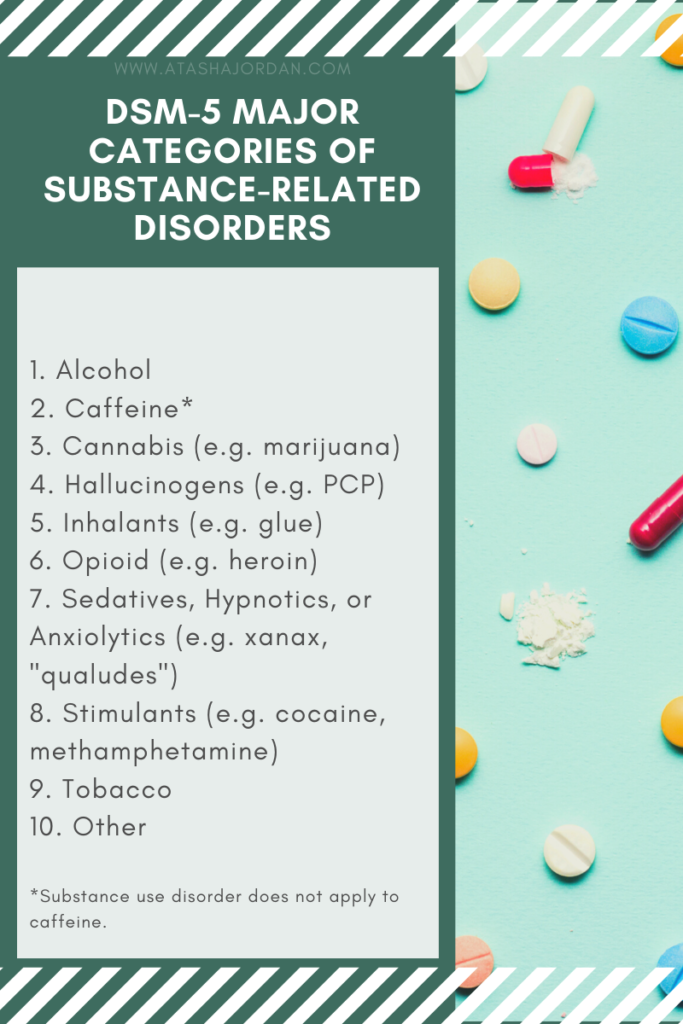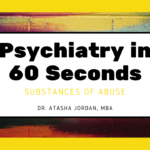Over 20 million Americans suffer from substance use disorders (SUD) that include a broad array of substances of abuse. For instance, opioid use disorder and alcohol use disorder have been on the rise in recent decades, contributing significantly to the burden of disease in this country. However, many people do not even realize that they have an illness. According to the Diagnostic and Statistical Manual of Mental Disorders, Fifth Edition (DSM-5) – the psychiatrist’s guide for diagnosis – there are ten categories of substances with potential for disordered use.
Substances of Abuse – Psychiatry in 60 Seconds Video:
10 Common Categories of Substances of Abuse
In my previous post What is Substance Use Disorder?, I discussed the DSM-5 criteria for substance use disorder. These 11 criteria are used to aid in the diagnosis of persons with disordered substance use. Now, listed below are the ten major categories of substance-related disorders, per the DSM-5 criteria.

I hope that this post helped you to better understand which substances are commonly seen as substances of abuse in the US.
Of note, the contents of this post are not intended to diagnose or treat. Additionally, this post does not establish a doctor-patient relationship. If you feel that you or a loved one would benefit from medical treatment for a substance use disorder, please reach out to your primary care physician for additional information and next steps.
The Substance Use and Mental Health Services Administration (SAMHSA) is also a valuable resource for additional information.
Dr. Atasha Jordan is an Ivy League-trained psychiatry resident and businesswoman. Learn more about Dr. Jordan here. and feel free to send a message here.






